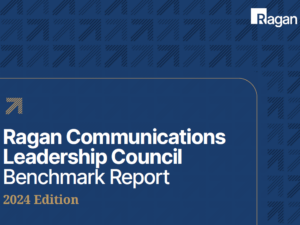Workplace Wellness Insider’s 15-item guide and checklist for wellness ROI
Follow this guidance to prove the worth of your work.

As the concept of workplace wellness evolves and moves to the center of conversations around benefits, employee productivity DE&I, and more, mapping costs against the value of the investment becomes increasingly critical. Workplace Wellness Insider developed this checklist to provide context and to serve as a to-do list as organizations seek to measure ROI of their well-being efforts.
- In alignment with business requirements, providing employees more choice and flexibility will yield greater productivity, increased access to talent and better business outcomes.
- Start the process of measurement by agreeing with your internal stakeholders on a definition of ‘wellness’ before you attempt to measure it.
- Determine mutual metrics of success.
- Be clear about each department’s strategies and goals, and reduce the complexity of your processes.
- Turn to tech for accessible, scalable solutions. Advances in technology help provide wellness solutions that check the boxes in that they are accessible and confidential, cover the continuum of care solution, are scalable and sustainable.
- Measure employee satisfaction through the lens of ‘absenteeism’ and ‘presenteeism,’ but know that presenteeism is a bit more difficult to measure. You can tell when a person is absent from work. But what if someone is present at work but not all the way there mentally can create an unsafe environment? Whether it is anxiety, mental health or social injustices in or out of workplace, they are all things to measure.
- It costs 34% of a person’s salary when an employee is disengaged or partially engaged. Leaders need to know and understand the cost to their company if employees are disengaged.
- Measurement tools need to be both quantitative and qualitative.
- Wellbeing, DE&I and business objectives do not sit in silos. However, DE&I is often placed in its own silo almost like a guest house out back. Until we realize that this work is central to business outcomes, we won’t see results.
- If everyone is helping to roll a stone up the hill, change is more likely. The challenge is: How do you find those common points of emphasis that everyone can rally behind? Everyone will have their own points of emphasis—but how can you get everyone to push together?
- Especially in DE&I, people get wrapped around initiatives. Initiatives that are not grounded in understanding will fail eight times out of 10. Make sure that whatever action or campaign you take is based in deep insights so that it will eventually lead to long- term, meaningful change.
- The way you planned to accomplish your goals is most likely not the way the work will need to be done. Be flexible and have contingencies.
- COVID 19 has had both positive and detrimental impacts related to working remotely. Many workers are enjoying the flexibility, comfort and efficiency that comes from working at home, with no commute, flexible hours, fewer distractions and more.
- Overall, the COVID pandemic has revealed the need for a fundamental rethink of the long-term working model.
- At every step, provide educational resources, programming and services to embed wellness into the workplace culture.






